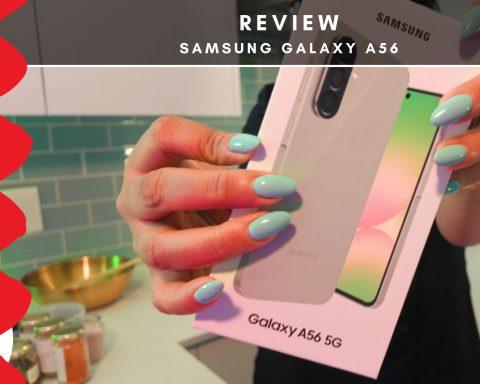The Zenfone 12 Ultra arrives as ASUS’s bold pitch for a flagship that leans hard into on-device AI and camera stabilization rather than packing every spec war trophy. At its heart is Qualcomm’s Snapdragon 8 Elite, a 6-series of AI and performance improvements, and ASUS’s much-touted 6-Axis Hybrid Gimbal Stabilizer 4.0 — a combination that promises buttery video and smarter imaging. The result is a phone that’s unusually confident about what it wants to be: a content-creator’s tool with practical AI tricks and rock-steady video, but not necessarily the best all-round flagship if you want the absolute top display or the widest global availability.
Quick specs (high level)
-
SoC: Qualcomm Snapdragon 8 Elite
-
Display: ~6.78″ Samsung Flexible AMOLED, FHD+ (2400×1080), LTPO 1–120Hz (up to 144Hz for gaming)
-
Main camera: 50 MP (Sony Lytia 700) + tele 32 MP + ultrawide 13 MP; 6-Axis Hybrid Gimbal Stabilizer 4.0 + HyperSteady EIS
-
RAM / Storage: up to 16 GB LPDDR5X / up to 512 GB UFS4.0
-
Battery & charging: 5,500 mAh, 65W wired, ~15W wireless (Qi)
-
OS: Android 15 with ASUS AI features (on-device tools like AI Tracking, AI Portrait Video, AI Call Translator, semantic gallery search, transcription and summaries)
Design & build — big, plain, and practical
ASUS keeps its design language restrained: matte glass back, recycled aluminum frame, IP68 rating, and a relatively hefty 220 g footprint. It’s a phone that reads utilitarian rather than flashy — which is fine for creators who want a stable workhorse instead of a flex device. The clean rear and lack of gimmicky accents are welcome, and the included case and solid stereo speakers fit the “work tool” vibe.
Display — solid, but not the pixel party
The Zenfone 12 Ultra uses a Samsung flexible AMOLED with LTPO variable refresh, hitting up to 120Hz for normal use and 144Hz in certain gaming scenarios. Resolution is FHD+ rather than QHD, which keeps battery life and thermals in check but is a little conservative for a ~6.8-inch panel. If you want the absolute sharpest text and tiniest details on a big screen, some rivals offer denser panels — but for most creators and videographers, the display is bright and punchy enough.
Performance & AI — Snapdragon 8 Elite with real on-device smarts
Snapdragon 8 Elite gives the Zenfone excellent real-world performance: app loading, multitasking, and on-device AI workloads all feel snappy. ASUS leans into AI as a product differentiator — features like AI Tracking, AI Portrait Video, on-device transcription, background noise removal for video, semantic gallery search, and document summarization are baked into the experience and many run locally (meaning speed and privacy benefits). Benchmarks from reviews show flagship-class throughput and particularly strong “AI burst” capabilities, thanks to the Elite CPU/GPU/NPU combo.
Camera & stabilization — the headline act
This is where the Zenfone 12 Ultra wants to justify the “Ultra” name. The hardware camera stack is familiar: a 50MP Sony main (Lytia 700), a 32MP telephoto and a 13MP ultrawide. What differentiates it is the 6-Axis Hybrid Gimbal Stabilizer 4.0 — a hardware gimbal plus improved EIS algorithm (HyperSteady) that ASUS says expands compensation range to ±5°, and pairs with AI Tracking to keep moving subjects centered and steady. In practice reviews and ASUS demos show impressively smooth walk-and-talk footage, fewer micro-jitters, and better subject centering for vlogs and action shots — think gimbal-like steadiness without carrying extra gear. For creators shooting handheld travel clips and run-and-gun footage, this is a hugely practical feature.
Where ASUS is less aggressive is raw camera innovation: the sensors and focal ranges are conservative compared to some rivals that push mega-resolution or periscope zooms. Still, for stabilized main-camera video and day-to-day photography with helpful AI touchups (AI Unblur, AI HyperClarity), the system is a strong match. Reviewers say video quality is a standout even if still photos don’t always beat the very best sensor stacks.
Video features that matter
-
AI Tracking: auto-zooms and pans to keep people centered during movement
-
AI Portrait Video 2.0 and background noise removal for clearer vlogs
-
HyperSteady EIS + hardware gimbal — real world smoothing without external gimbals
Those features are practical for single-operator creators: less post stabilization, more usable footage straight out of the phone.
Battery & charging — endurance for long shoots
A 5,500 mAh cell plus efficient chipset and an LTPO display yields very good battery life in testing (all-day plus moderate extra for creators on the move). 65W wired charging is plenty fast; wireless charging is present but modest at ~15W. If you’re filming a half-day run and editing clips, you’ll appreciate the capacity and realistic charging speeds.
Software, updates & extras
Zenfone 12 Ultra ships on Android 15 with ASUS’s suite of AI tools: call translator, voice memo transcription, semantic photo search, AI summaries and more. ASUS has committed to several years of security updates; actual major Android version update promises vary by region, so check local ASUS policy. The software is useful and practical rather than gimmicky — many tools actually save time for creators (e.g., on-device transcripts and semantic gallery search).
Price & availability
ASUS launched the phone at around €1,099 in markets where it’s available, but availability is fragmented — some key regions (notably the U.S.) were left out at launch. That regional restriction matters: you might pay import premiums or miss carrier support depending on where you live. If you can buy it locally, the phone undercuts or matches other flagships on price while delivering standout stabilization and AI.
Pros and cons
Pros
-
Outstanding handheld video stabilization thanks to the 6-Axis Hybrid Gimbal Stabilizer 4.0
-
Powerful Snapdragon 8 Elite performance and on-device AI capabilities
-
Strong battery life and practical charging speeds
-
Clean design, IP68 and solid stereo speakers
Cons
-
FHD+ resolution on a large panel feels conservative versus QHD flagships
-
Camera hardware is competent but not radically different from prior Zenfones; photos sometimes lag best-in-class shooters
-
Availability and pricing are regional — not guaranteed worldwide (U.S. omission at launch)















